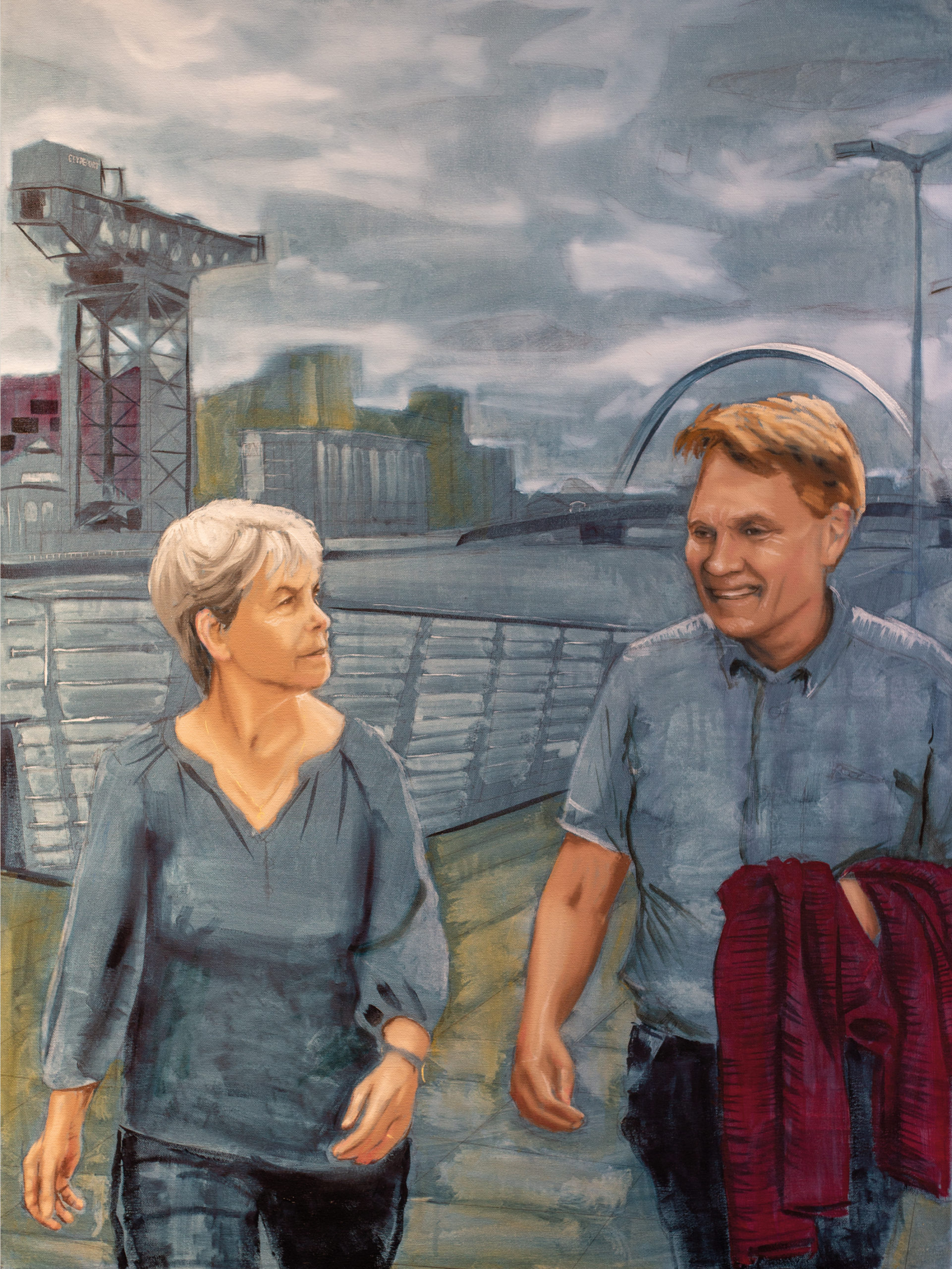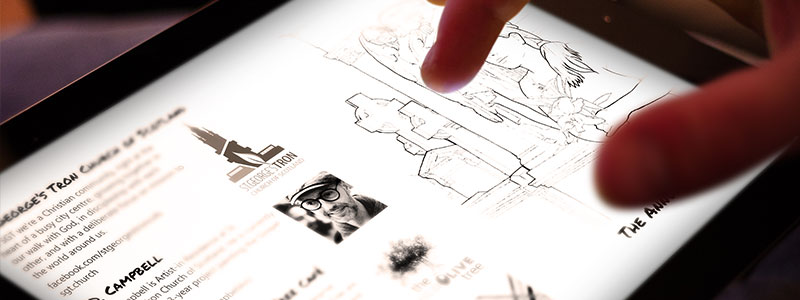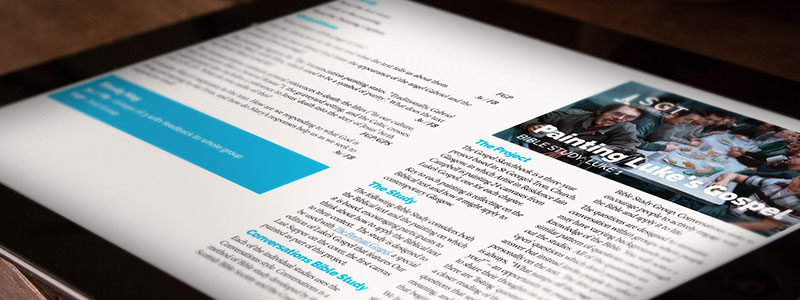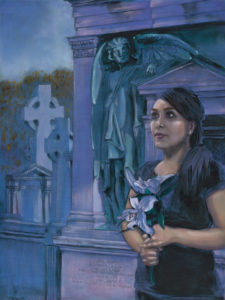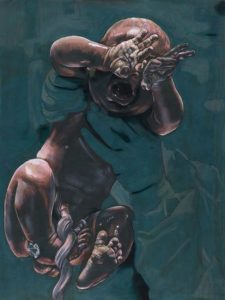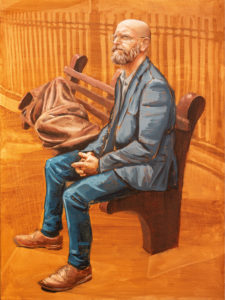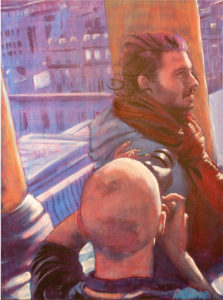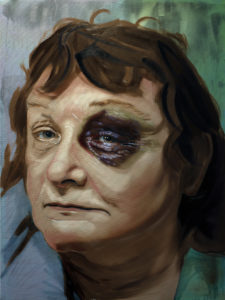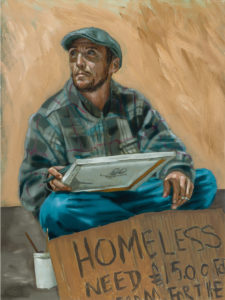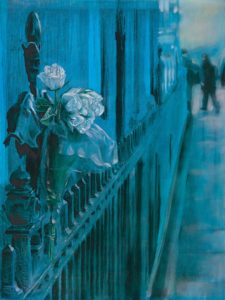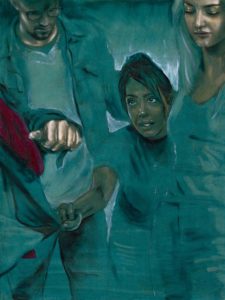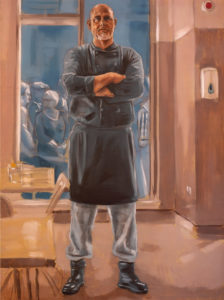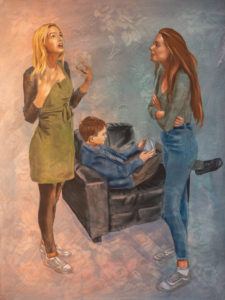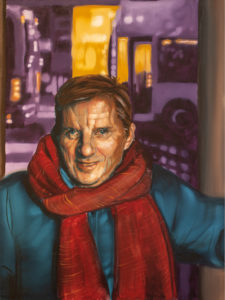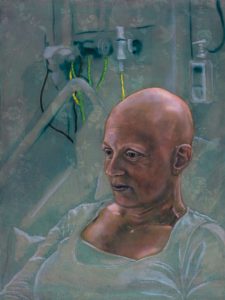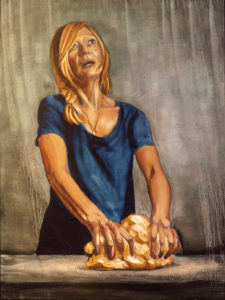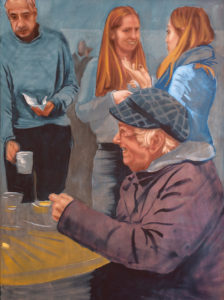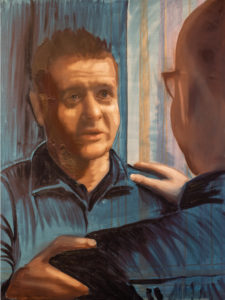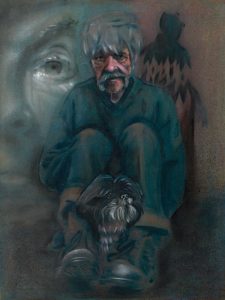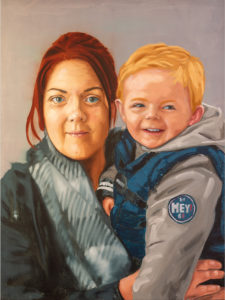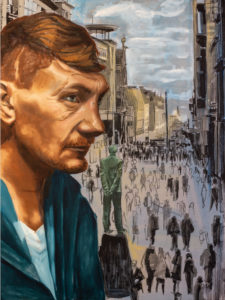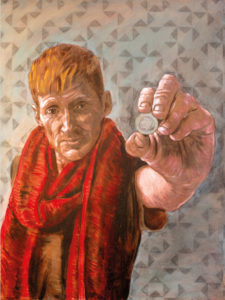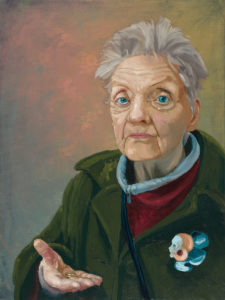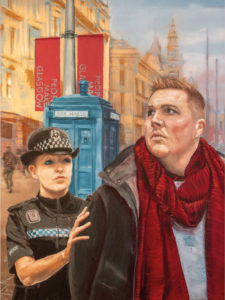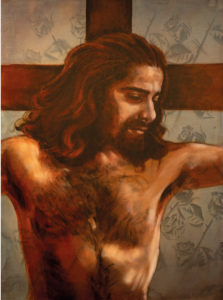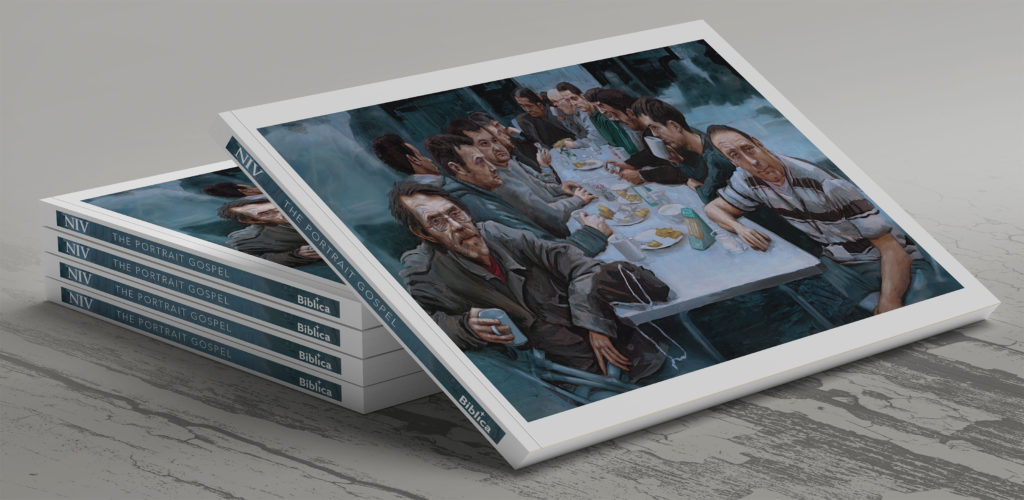The Road to Emmaus
For the final Gospel of Luke painting, it seemed fitting to use this iconic Glasgow location, with the Finnieston Crane and the Clyde Arc symbolising Glasgow’s roots and how we move forward into the future. It is a fitting symbol for the Emmaus Road story too, knowing Christianity’s roots and bridging into a new future. For the Church in Scotland too, we are mindful of the past and move forward into the future, which always has uncertainties.
Judy and Iska Routamaa, who are featured in the painting, have worked for Wycliffe Bible Translators for many years. Their lives have been dedicated to communicating the message of Jesus to different cultures. This art project too, has sought to connect with those who haven’t had a chance to hear about Jesus and also give an opportunity, to those who thought they knew it all, to take a fresh look.
On the road to Emmaus
Now that same day two of them were going to a village called Emmaus, about seven miles from Jerusalem. They were talking with each other about everything that had happened. As they talked and discussed these things with each other, Jesus himself came up and walked along with them; but they were kept from recognizing him.
He asked them, “What are you discussing together as you walk along?”
They stood still, their faces downcast. One of them, named Cleopas, asked him, “Are you the only one visiting Jerusalem who does not know the things that have happened there in these days?”
“What things?” he asked.
“About Jesus of Nazareth,” they replied. “He was a prophet, powerful in word and deed before God and all the people. The chief priests and our rulers handed him over to be sentenced to death, and they crucified him; but we had hoped that he was the one who was going to redeem Israel. And what is more, it is the third day since all this took place. In addition, some of our women amazed us. They went to the tomb early this morning but didn’t find his body. They came and told us that they had seen a vision of angels, who said he was alive. Then some of our companions went to the tomb and found it just as the women had said, but they did not see Jesus.”
He said to them, “How foolish you are, and how slow to believe all that the prophets have spoken! Did not the Messiah have to suffer these things and then enter his glory?” And beginning with Moses and all the Prophets, he explained to them what was said in all the Scriptures concerning himself.
As they approached the village to which they were going, Jesus continued on as if he were going farther. But they urged him strongly, “Stay with us, for it is nearly evening; the day is almost over.” So he went in to stay with them.
When he was at the table with them, he took bread, gave thanks, broke it and began to give it to them. Then their eyes were opened and they recognized him, and he disappeared from their sight. They asked each other, “Were not our hearts burning within us while he talked with us on the road and opened the Scriptures to us?”
They got up and returned at once to Jerusalem. There they found the Eleven and those with them, assembled together and saying, “It is true! The Lord has risen and has appeared to Simon.” Then the two told what had happened on the way, and how Jesus was recognized by them when he broke the bread.
Luke 24:13-35 NIVUK
Downloads
Explore the paintings
The Portrait Gospel
The Gospel of Luke uniquely illustrated by Iain Campbell
The Portrait Gospel is uniquely illustrated by Iain Campbell. By using modern day Glaswegians as his models, Iain’s compelling paintings bring 21st century life to the words of a first century disciple.
Copies of The Portrait Gospel are available to buy in person from St George’s Tron Church, Glasgow.
